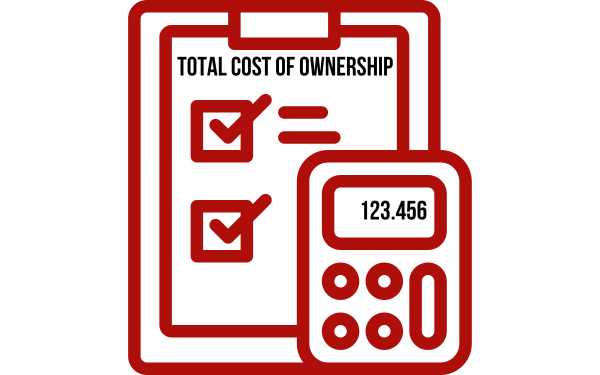In our previous blog on TCO we covered the components of total cost of ownership. Those being;
- Initial investment costs
- Maintenance and support costs
- Upgrades and software updates
- Training and onboarding costs
- Integration and compatibility expenses
- Hidden costs to consider
In this blog we will outline calculating the total cost of ownership and the importance of considering TCO when choosing an EPOS system.
Calculating the total cost of ownership
Now that we’ve explored the various components that contribute to the total cost of ownership, let’s discuss how you can calculate it accurately. Calculating the total cost of ownership involves considering both the upfront costs and the ongoing expenses throughout the system’s lifespan. Here are the steps to calculate the TCO of your EPOS system:
- Identify the initial investment costs, including hardware, software licensing fees, and any necessary peripherals.
- Determine the expected lifespan of your EPOS system. This can vary depending on the quality and durability of the hardware and software.
- Estimate the ongoing maintenance and support costs, including technical support fees, software updates, and regular maintenance services.
- Consider the costs of future upgrades and software updates to keep your EPOS system up to date.
- Factor in the training and onboarding costs for you and your staff.
- Assess the integration and compatibility expenses required to connect your EPOS system with your existing infrastructure and software.
- Account for any hidden or unforeseen costs that may arise during the system’s lifespan.
By following these steps and considering all the relevant factors, you can obtain a comprehensive understanding of the total cost of ownership for your EPOS system.
Importance of considering TCO when choosing an EPOS system
U understanding the total cost of ownership is essential when considering an EPOS system for your business. By taking into account all the components that contribute to the overall cost, you can make a more informed decision and avoid any financial surprises. Calculating the total cost of ownership allows you to evaluate the long-term financial impact, weigh it against the benefits and potential return on investment, and choose an EPOS system that aligns with your business needs and budgetary constraints.
Remember to consider the initial investment costs, ongoing maintenance and support expenses, upgrades and software updates, training and onboarding fees, integration and compatibility expenses, as well as any hidden costs that may arise. By factoring in all these elements, you can make a well-informed decision that supports the growth and success of your business.
Investing in an EPOS system can be a significant decision, but by understanding the total cost of ownership, you can ensure a smooth implementation and reap the benefits of improved efficiency, accuracy, and customer satisfaction. So, don’t just focus on the price tag alone, consider the bigger picture and make a decision that sets your business up for long-term success.
If you still find TCO a bit unclear and there are aspects that you are unsure about, please don’t hesitate to get in touch. One of our team members will reach out to provide assistance and support in helping you make the best decision for your business needs.
📧: salesUK@advantech-aures.com
📞: 01928 599 966




